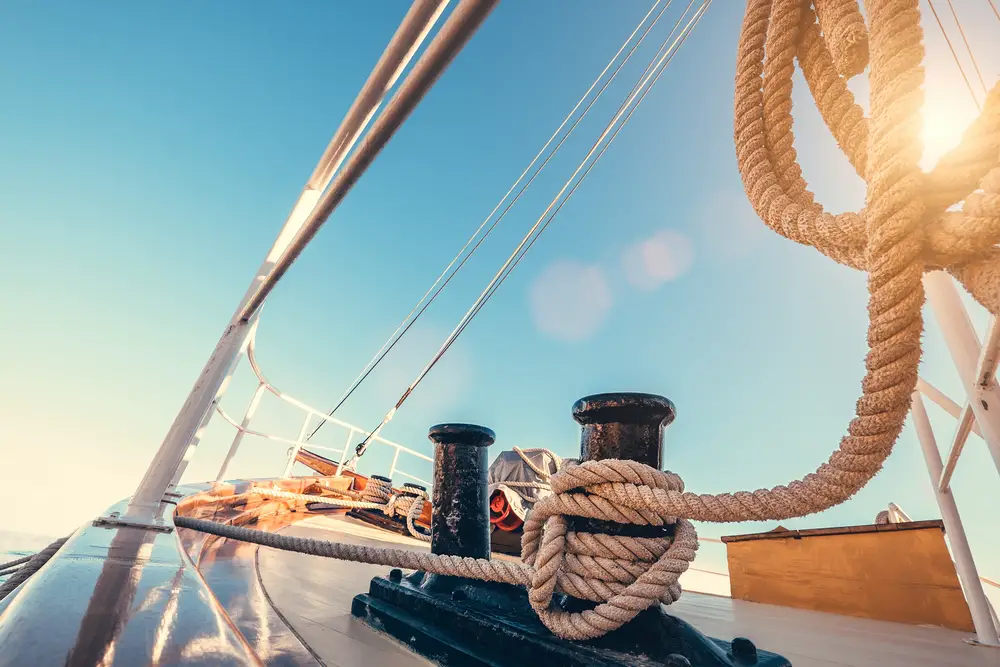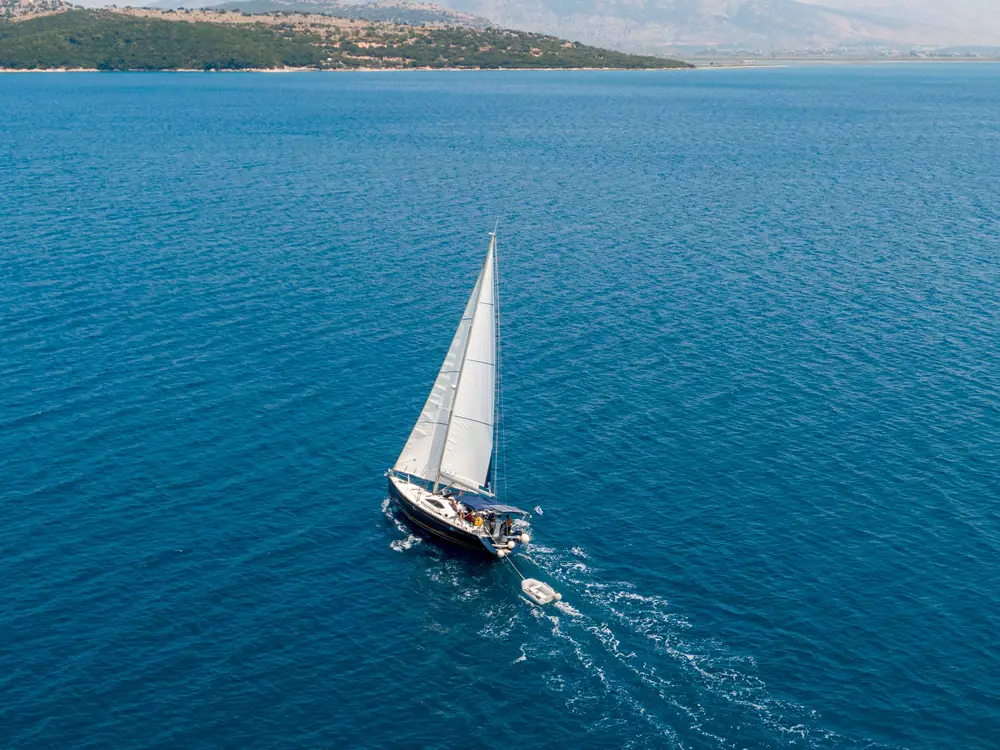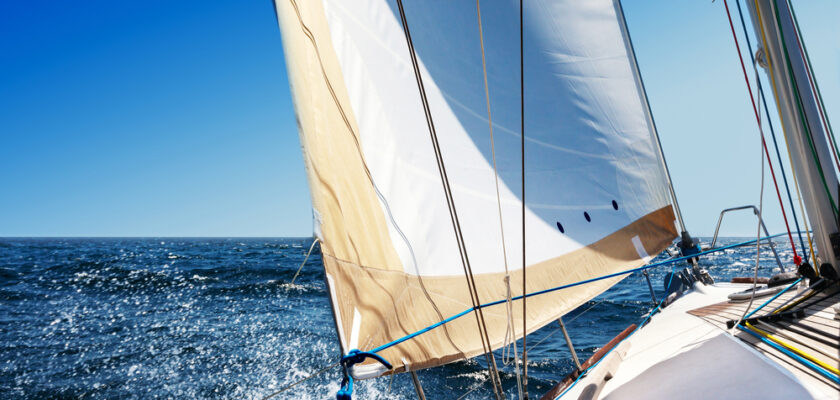Sailing is a very old sport that combines skill, strategy and a lot of knowledge of nature. The sport is complex because it is not limited to the act of sailing a wind-powered boat, as it requires knowledge of technical terms and concepts that are crucial for safe and efficient practice;
From preparing the boat to reading the winds and tides, every detail of sailing requires detailed and precise knowledge. With this in mind, we’ve put together a sailing glossary with the main terms used in the sport.
Find out what the terms stopper, hull, windlass, propeller, liner, keel and many others mean. Check out the sailing glossary!

Open your Betano account and get up to 1,000 reais in bonuses.
Payments via PIX, live games and super odds!
Click here to open your account!
Sailing glossary: complete list
- Amura
- Baluma
- Stopper
- Bolina
- Edge
- Edge
- Beak
- Head
- Laces
- Canoe
- Loader
- Hull
- Wind vane
- Backwind
- Back
- Stamp
- Deflector
- Reel
- Stake
- Escota
- Pig snout
- Squeal
- Winch
- Propeller
- Float line
- Mast
- Orça
- Spi stick
- Keel
- Retrenchment
Sailing glossary: learn more about the terms
Amura
The amura is the name given to the side of the boat that is receiving the wind, which is crucial for determining the sailing tactics and maneuvers to be carried out.
Baluma
The baluma is the trailing edge of a sail, adjusted to optimize its efficiency and allow the boat to perform better.
Batten
The batten is the term given to the anchor point or attachment of a sail or cable to the boat. It is essential in sailing, as a secure hold is crucial for the stability and safety of the boat.
Bowline
A bowline is a movable board or keel that can be lowered to reduce the boat’s lateral drift. It is very useful when sailing upwind, helping to maintain the desired course.
Edge
The edge is the upper end of the boat’s hull, and there are two main edges: the starboard edge (right) and the port edge (left).
Starboard
Starboard is the direction in which the boat is sailing in relation to the wind. There are two main types: starboard and port.
Buja
The buja is a smaller headsail that is easier to maneuver than the main. It is usually used in strong winds or for precision sailing. The jib allows quick adjustments and improves the boat’s maneuverability.
Bollard
The bollard is a piece of equipment used on deck to tie down cables. There are several types of bollards, including mooring bollards and sail securing bollards.
Lashing
A shoelace is a thin cord used to tie or secure something to a boat. It can be used to attach sails, equipment or other items on board.
Canoe
A canoe is a small, light craft, often used as an auxiliary dinghy on larger boats. When sailing, a canoe can be used to transport crew or supplies.
Loader
In sailing, a loader is a cable or piece of equipment used to raise sails or other items on board. It allows for quick and efficient sail adjustments, essential for responding to changing wind conditions.
Hull
The hull is the main structure of the boat, responsible for buoyancy in the water. The design and shape of the hull directly influence the boat’s performance and stability. A well-designed hull provides better navigation and maneuverability.
Wind vane
The windlass is a device used to indicate the direction of the wind. It is usually mounted on the top of the mast and helps sailors adjust the sails according to the wind direction, optimizing sailing.
Upwind
Sailing upwind is the process of sailing in a direction opposite to the prevailing wind.
Side
The side is the lateral part of the boat’s hull, responsible for protecting the interior of the vessel and helping to define the shape and strength of the boat.
cleat
The cleat is a fastening device on the deck used to tie down cables.
Deflector
In sport, a deflector is a device used to divert or redirect the flow of air or water.
Reel
The furler is a device used to furl or unfurl sails, allowing quick adjustments in response to changing wind conditions, improving efficiency and safety.
Stay
The stay is a cable that runs from the bow to the top of the mast, providing support and stability to the mast. It is essential for keeping the mast structure upright and ensuring everyone’s safety.
Hatch
The clew is a cable used to adjust the tension and position of a sail. When properly adjusted, they are essential for controlling the angle and shape of the sails, optimizing the boat’s performance.
Pig snout
The pig’s snout is a type of knot used to tie ropes quickly.
Lining
The headliner is a protective layer that sits on the deck or other parts of the boat and is designed to protect the surface from damage. Well-maintained liners help prolong the life of the boat and maintain its appearance.
Yawing
Yawing is a maneuver in which the boat changes direction, rotating around its vertical axis.
Propeller
The propeller is a propulsion device used on motorboats, helping with navigation when there is not enough wind to sail.
Waterline
The waterline is the line where the boat’s hull meets the surface of the water. It is an important reference for the stability and load of the boat, indicating how much of the hull is submerged.
Mast
The mast is a vertical structure that supports the sails. The height and rigidity of the mast are crucial to the performance of the sails, and to the boat’s ability to sail efficiently.
Heading
The orça is the maneuver of sailing against the wind and requires a specific angle, as well as precise adjustments of the sails.
Spinnaker pole
The spinnaker pole is a horizontal pole used to hold the spinnaker in an ideal position to catch the wind. It is often used in favorable winds to increase the sail area and the boat’s speed.
Keel
The keel is a structure on the underside of the hull that helps stabilize the boat, providing balance and control.
Rear boom
The boom is a horizontal mast connected to the base of the main mast and the mainsail, making it possible to adjust the tension and optimize the boat’s performance and maneuverability.

Sailing glossary: complete list
- Amura
- Baluma
- Stopper
- Bolina
- Edge
- Edge
- Beak
- Head
- Laces
- Canoe
- Loader
- Hull
- Wind vane
- Backwind
- Back
- Stamp
- Deflector
- Reel
- Stake
- Escota
- Pig snout
- Squeal
- Winch
- Propeller
- Float line
- Mast
- Orça
- Spi stick
- Keel
- Retrenchment
Sailing glossary
That was the glossary of sailing! Now that you know the main words used in the sport, take the opportunity to check out our other special content on the subject;
Here you can find lists, glossaries, rankings, special articles, news and much more about the world of sport. Don’t forget to leave a comment telling us what you think of the content and what else you’d like to read here!





